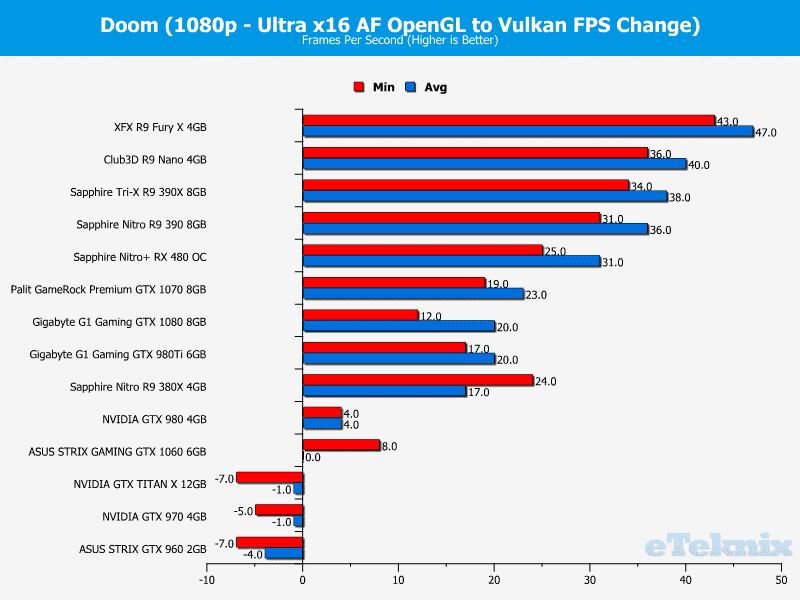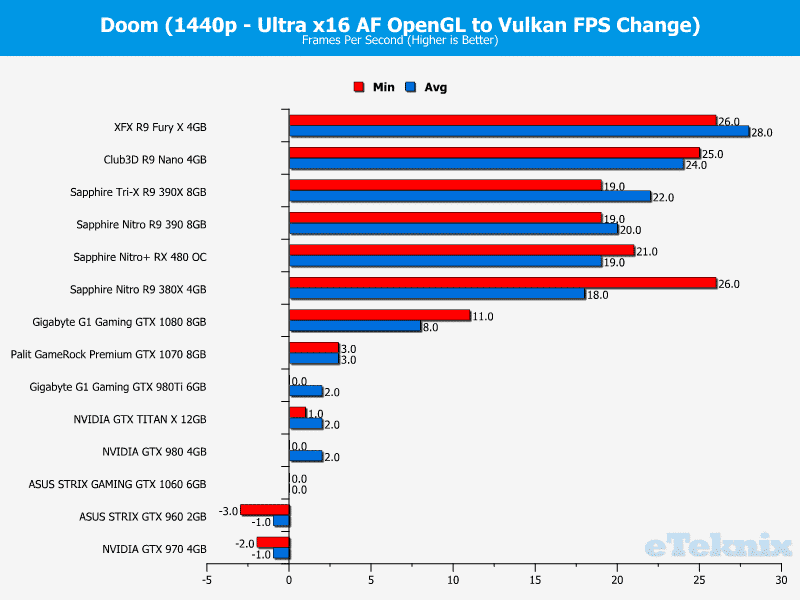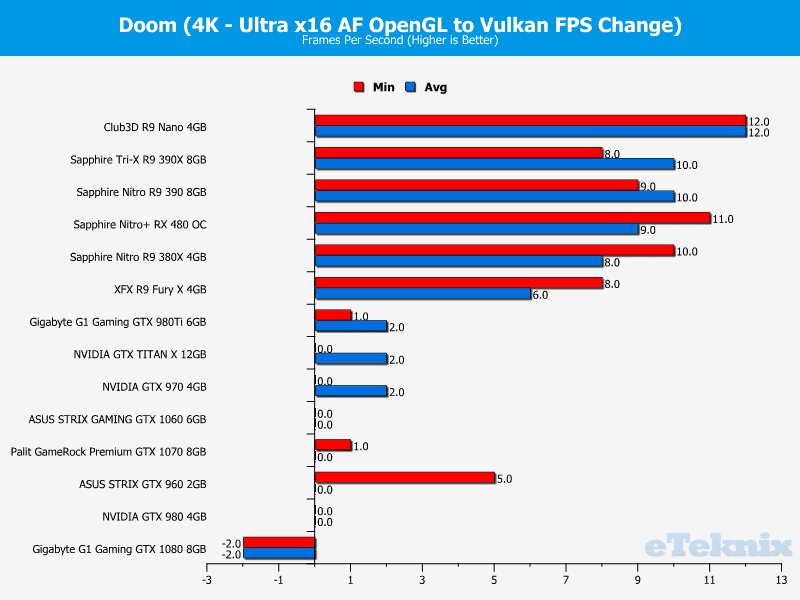Doom OpenGL VS Vulkan Graphics Performance Analysis
John Williamson / 8 years ago
Doom – 1080p, 1440p and 4K API Comparison
Listing two sets of charts isn’t the most effective way of illustrating how the Vulkan API changes the status quo in Doom. While the data below isn’t prettiest I’ve compiled, it’s essential to explain the major advantage AMD hardware has in this area. Please remember, the numbers are not actual frame rates but the frame-rate improvement when moving from OpenGL to Vulkan. To my amazement, some NVIDIA cards actually perform worse using Vulkan and I ran the benchmarks multiple times to clarify this.
Here we can see that across AMD’s hardware range, each graphics card exhibits a monumental boost in performance and this is particularly the case when using higher-end solutions such as the R9 Fury X and R9 390X. Of course, to balance this properly, it’s important to note that some NVIDIA cards do rather well too. Saying that, the performance is unpredictable and appears to only favour certain models.

During 1440p testing, AMD graphics cards continued to impress and posted jaw-dropping performance improvements. As you can see, mid-tier cards increased their average frame-rate around the 20 figure while the R9 Nano and Fury X managed even better results. Additionally, the minimum frame rates were much higher which contributes to a smoother user-experience.
Unlike the 1080p numbers, the GTX 980Ti struggled to utilise Vulkan’s potential and the overwhelming majority of NVIDIA graphics cards posted identical results to OpenGL. While there are some negative numbers here, I’d argue that it’s probably down to a margin of error. This is different to the 1080p data where the negative change is much larger. On a more positive note, the GTX 1080 enjoyed a decent improvement but it’s not at the same level as AMD products.

Despite having to contend with a very harsh preset while pushing so many pixels, AMD graphics solutions still managed impressive performance gains. This is staggering when you consider the 4K frame rates are relatively low and this improvement is enough to make the game playable in many circumstances. The R9 Nano’s 12 frames-per-second boost in both average and minimum data sets is nothing short of extraordinary. Also, the R9 390X, R9 390 and RX 480 came into their own when using Vulkan.
On the other hand, I was slightly surprised that the R9 Fury X didn’t attain numbers similar to the R9 Nano given the pattern in 1080p and 1440p testing. In terms of NVIDIA graphics cards, there’s not a lot of positive change to speak of apart from the GTX 960’s minimum frame rate. This saving grace is inconsequential since it’s a low-end graphics card not designed for 4K gaming. Clearly, the improvements for NVIDIA users are very small.




















